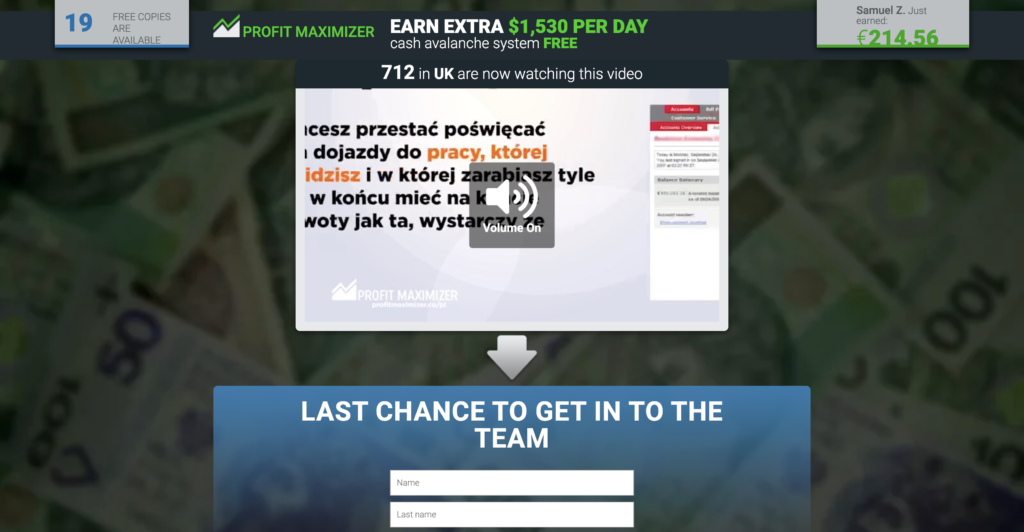You understand how the spot market works (if you don’t, I’ll be writing a post about it soon) and now you’re trying to learn how does Bitcoin or Altcoins futures markets work, but you’re lost in all those milk and rice examples and can’t understand how can that be applied to cryptocurrencies. I’ll try to clarify this to you (with a corn example, yay!), while also solidifying this knowledge myself. We will study the futures market from the ground up.
Trading in the future
You can jump to the second part of this post if you just want to trade some futures and don’t want to go so deep into this, but I think it’s important to understand why things exist in the first place, especially when there’s money involved. But anyway, it’s up to you, you can always come back here if you start getting confused.
Imagine this: You’re a popcorn producer and in 2 months you will need 1 ton of corn for your next batch. You can’t predict what will the price of corn be in 2 months, so you make your calculations using the corn spot price and you see that after governmental theft, sorry, taxes, production costs and all that, you will profit when you sell the popcorn.
You meet with a corn farmer who just planted her crop, which she’ll harvest in 2 months. She agrees to sell you some corn from her next harvest. You make a contract: Mrs. Corn Farmer promises to deliver Mr. Popcorn Producer 1 ton of corn in 2 months in exchange for… How much?
If you let the price be the spot price at the delivery date, you’d be speculating, you don’t know what that price will be! If that price goes down, you’ll profit more, but if the price goes up, you’ll profit less and may even lose money. The reverse is true for the corn farmer.
You then fix the price at the current market price: US$ 100, a price that works for both you since you know you’ll be able to profit this way, and the farmer thinks the spot price will be less than US$ 100 in 2 months, so you both sign the contract.
That’s what a forward contract is: two parties make a custom contract (you will soon see why I’m calling it custom) agreeing to trade something at a future date and at a fixed price.
A bit of financial jargon: The party that will profit if the price goes up and lose if the price goes down (you, the popcorn producer) is in what’s called a long position, the party that will profit if the price goes down and lose if the price goes up (the corn farmer) is in what’s called a short position.
1 month has passed and the corn spot market price is 5% up. You, who’s in the long position (or simply put “You’re long”), are happy that you will only have to pay US$ 100 for 1 ton of corn now worth US$ 105 at the spot market. The farmer, who’s in the short position (or simply put “He is short”), starts thinking that if she hadn’t signed that contract and the spot price stays at US$ 105, or goes up even more, she’d be able to sell that 1 ton of corn at the spot market for a bigger profit, but it’s a contract, you’re happy with paying 5% less than the spot price and you’ll sue the farmer for breaching the contract if she doesn’t deliver.
But you’re now bearish, you start thinking this may be just a temporary spike in the price, so you want to realize that still unrealized US$ 5 profit now, afraid of losing it. The farmer is bullish, she’s afraid of loosing even more money if that price keeps going up, so she wants to realize her US$ 5 loss before she loses even more.
You know how to talk in terms of the farmer’s interests, so you make a proposal he can’t refuse: “You want to stop losing money, right? How’d you like to make a new contract where I sell you back that 1 ton of corn for US$ 105?”. You both sign that new contract.
Now you’re long on the first contract but short on the second contract, effectively closing your position (and realizing a 5% profit), and she’s short on her first contract and long on the second contract, effectively closing her position (and realizing a 5% loss). That, signing a new contract that cancels the previous one (and in this case closes a position), is called novating.
Another month passed, delivery date is here, the farmer’s fear was correct, the market price is now US$ 110. She’s glad she signed that second contract or she would’ve realized a 10% loss. You could’ve profited 10% instead of 5% had you kept your long open, but you’re still happy with your profit.
She now needs to transport 1 ton of corn to you and you need to pay her US$ 100 (first contract), then she needs to pay you US$ 105 and you need to send that corn back to her (second contract), she’ll then sell the corn for US$ 110 at the spot market. I’m just kidding, that’d be stupid as hell. She can just sell her corn at spot price for US$ 110, pay you US$ 5, and keep US$ 105.
Speculator to the rescue
Meanwhile, another person with a higher risk tolerance, a speculator, has been watching all this and is now thinking “Huh, it looks like the corn price is rising, I’m bullish and ready to take a gamble…”.
Now, you just signed another similar contract with the farmer for her next crop, this time at the spot price of US$ 110. You’re hoping to make some profit again, and she’s hoping to reduce her previous loss.
1 week passes and the spot market price is up again at US$ 115, you want to do the same thing you did before and realize your US$ 5 profit, so you approach the popcorn producer and say: “Hey, it seems that the price is moving up, I’d like to realize my profit again.”, but you forgot to talk in terms of her interests, you talked about what you want and she’s now thinking: “I don’t want to realize a loss again. I’ll just hope that the price will go back down until the delivery date.”, so she goes “Nope.” and now you’re stuck with this contract and risking losing your unrealized profit, you start getting really bearish…
That’s when the speculator starts acting. He smells that fear, he’s still bullish and he knows how to talk in terms of the your interests, so he approaches you and says: “Hey, I see you’re worried about losing that unrealized profit. How’d you like if I took that risk from you? I’m ready to help you realize that profit by buying that 1 ton of corn for the spot market price of US$ 115 at the original delivery date”. You take the offer by signing the contract, realizing your US$ 5 profit.
He could then wait for the spot market price to go up and open another contract on the short position with some other speculator on the long position, that way he’d close (novate) his original long position and realize his profit, and so on, I think you got it. But here’s the thing: None of them have any intention whatsoever of buying or selling corn!
Some trader could even short without having any corn or money! They’re just speculating on the underlying asset’s (corn) price volatility (movement) by opening and closing positions, realizing profits and losses, before the delivery date. The market can survive even without the asset producers (the farmer) and consumers (you) taking part in it before the delivery date.
Since no corn is really being traded until the delivery date, only contract positions, this has become a forward market, an over-the-counter market of forward contracts, a type of derivative, meaning its value derives from some other thing’s value (corn, a commodity, in this case).
But of course, on the delivery date of each contract whoever still has an open position must buy corn if long, and sell corn if short, even if that means taking a loss by buying at the spot market for a higher price and then selling for the lower contractual price or vice versa. Or risk being sued by the counterparty, the person on the other leg of the contract.
In fact, the amount of corn being traded might become larger than the amount of corn being produced! This would mean that if a lot of these contracts have the same delivery date, which usually happens on future markets where contracts are standardized, at that date the demand for corn would become bigger since all those traders who ended short would have to compete to buy it at the spot market to sell it to the counterparty, rising the spot price.
You should also notice that no money is being “created”, only transferred from one leg of the contract to the other.
Counterparty risk and standardization
Well, that escalated quickly and has become very interesting, but it’s also starting to look very messy. The contracts aren’t standardized, so the terms have to be discussed every time a new contract is to be created, this takes time and money.
There’s also a lot of counterparty risk, the risk of one party of the contract defaulting (not living up to its contractual obligations), if that happens you can sue the other person, but that also takes time and money… Since that person now has a debt with you, instead of suing him you could simply sell that debt to someone else at a lower price, at least you’ll get some of the money and the new owner will be responsible for collecting the money.
But anyway, these two problems and some others can be solved or reduced by introducing an exchange that will take care of:
- Creating standardized contracts (e.g.: Weekly, Biweekly and Quarterly), which in turn allows for higher market liquidity;
- Making sure each trader has enough collateral (e.g.: a cash margin deposited on his exchange account) to live up to his contractual obligations, reducing counterparty risk (but there are now the risks associated with involving a third party, the exchange);
- Forcing a trader’s position to be closed if the price fluctuates so much that his collateral is not enough anymore to cover his obligations, the dreaded margin call (you’ll understand that better soon);
- Allowing traders to order entering a position and matching them to traders who ordered entering the inverse position;
- Realize the profits and losses by transferring the money from a trader’s margin account into the other trader’s margin account (you’ll understand that better soon).
All this for a small predetermined fee, be it a position opening fee, a position closing fee, a deposit fee, an order fee, a withdraw fee or a combination of these.
With the exchange in place and the contracts, now called future contracts, standardized, a futures market is born!
Hedging
Now, you might be thinking: “Well, this kind of thing doesn’t seem to make much sense for non-speculators, such as the farmer.”
Well, yes, farmers are usually busy with farming, hurricanes, rain and all that, not with speculation, but that doesn’t mean they have no place in the futures market as it can be used to hedge (limit risk) against price volatility.
It goes like this: You have 1 ton of sugar in stock, this means you’re long on sugar and short on money. The price of sugar might go up or down but you want to lock the value of your stock, so you go into the market and short 1 ton of sugar. This way if the price goes up 5% your stock is now worth 5% more, but you’re also losing 5% on your short, if the price goes down 5% your stock is now worth 5% less, but you’re also profiting 5% on your short. This effectively locks the value of your stock, hedging you against price volatility.




